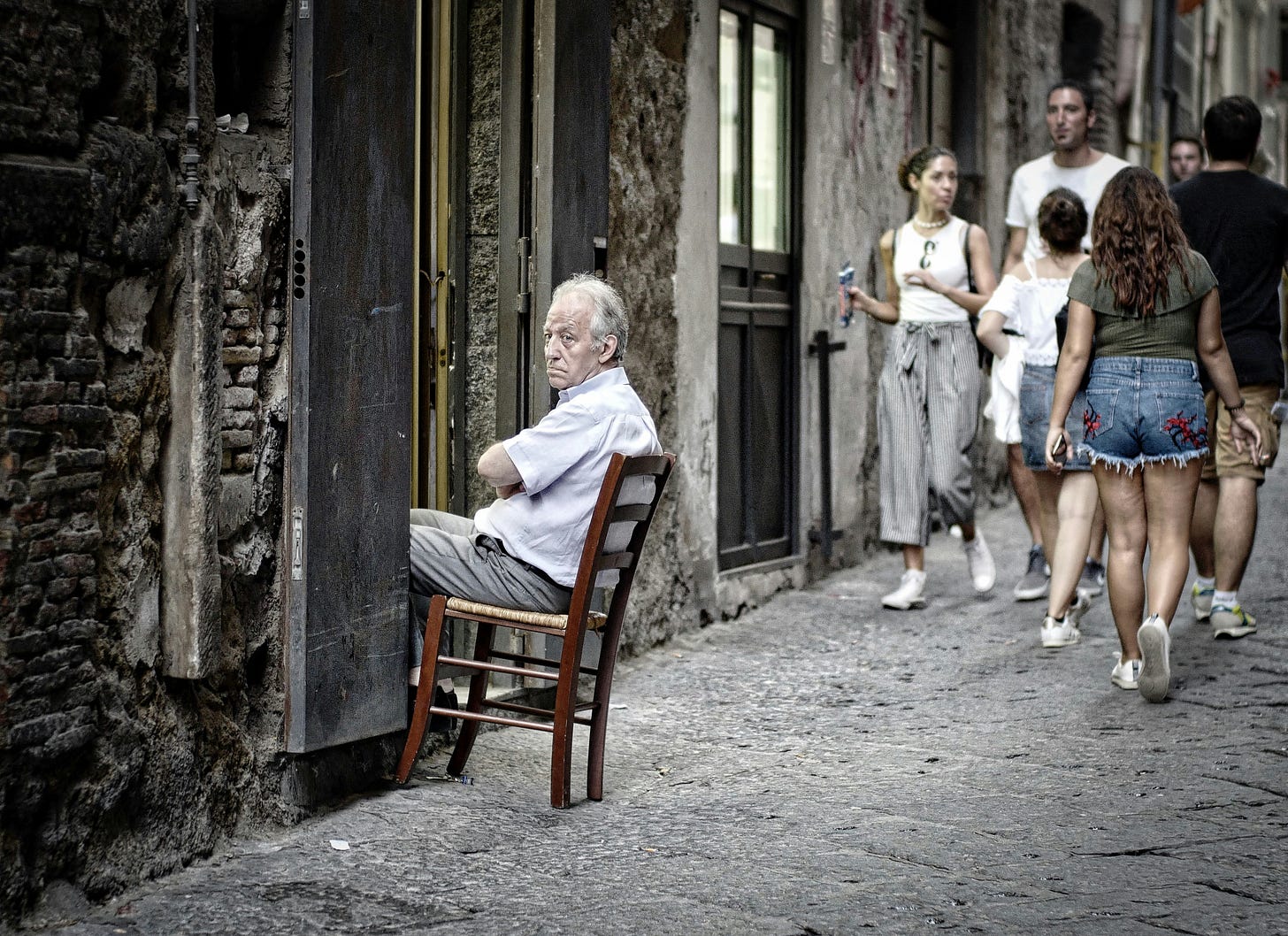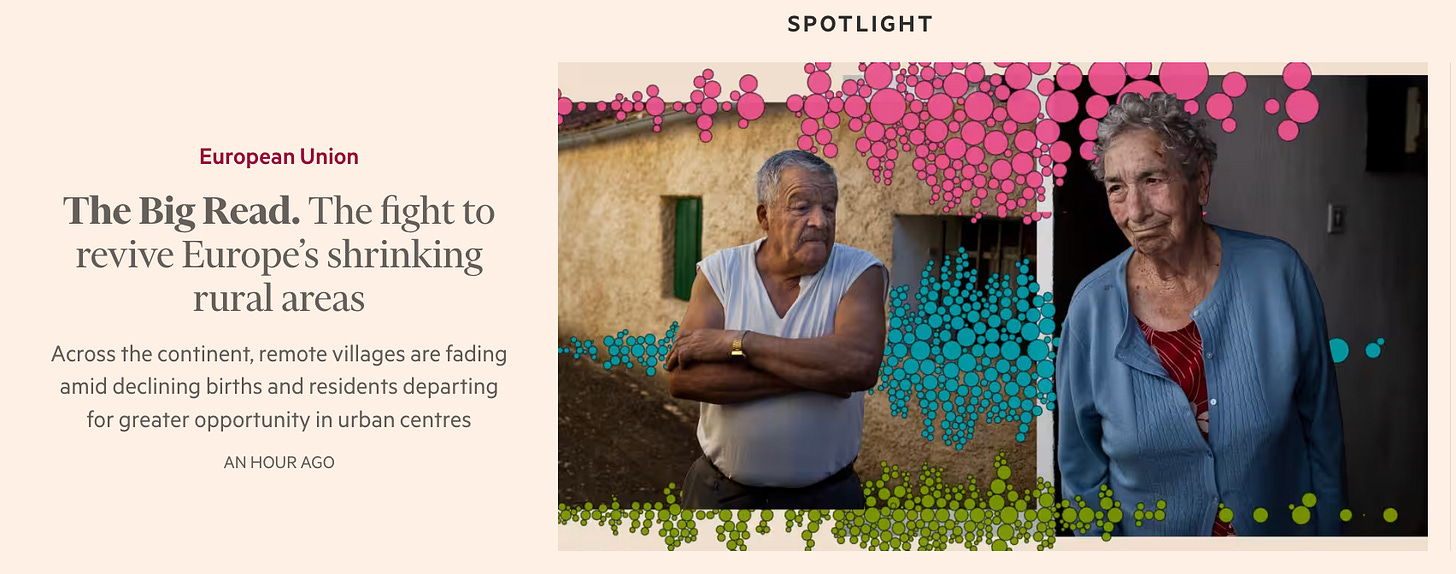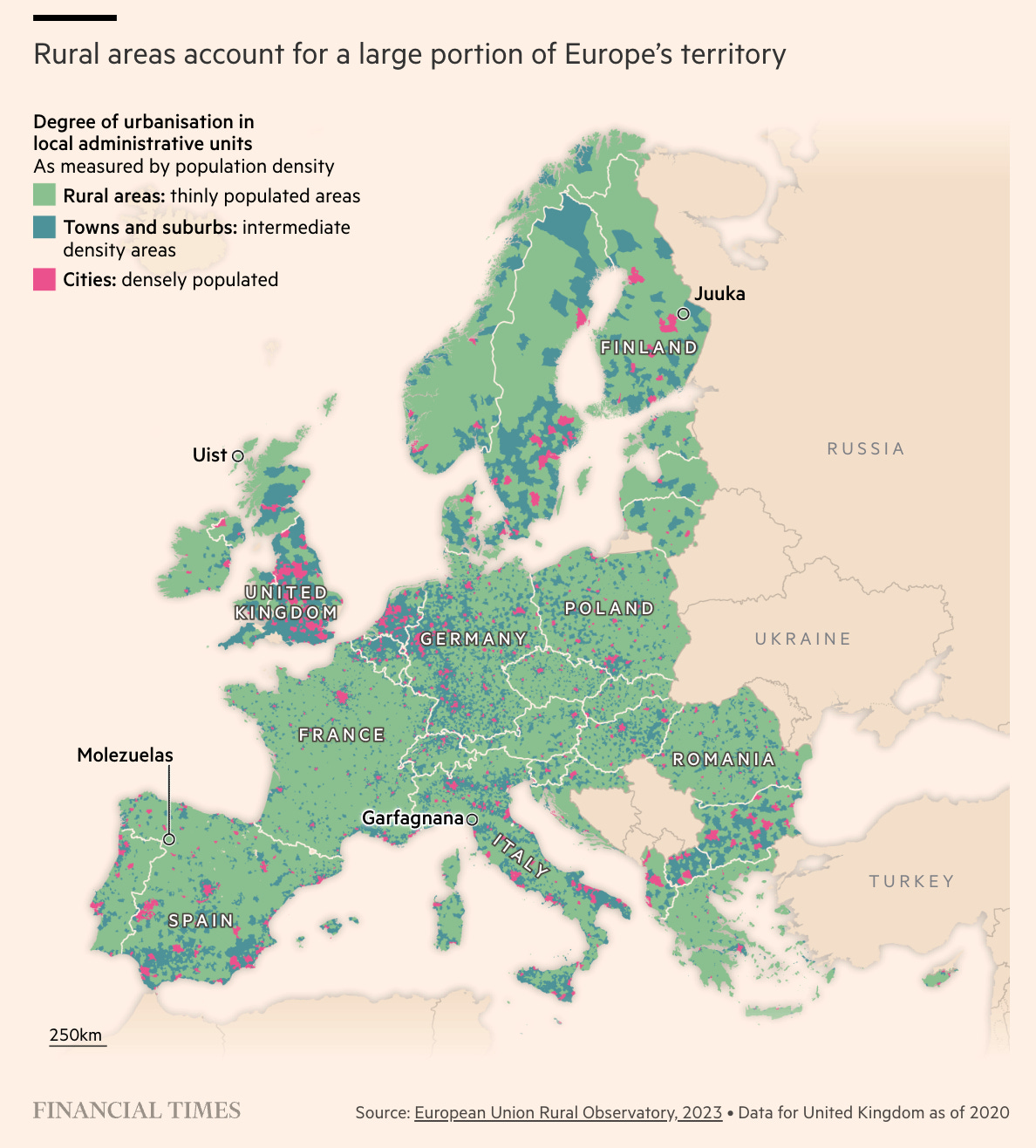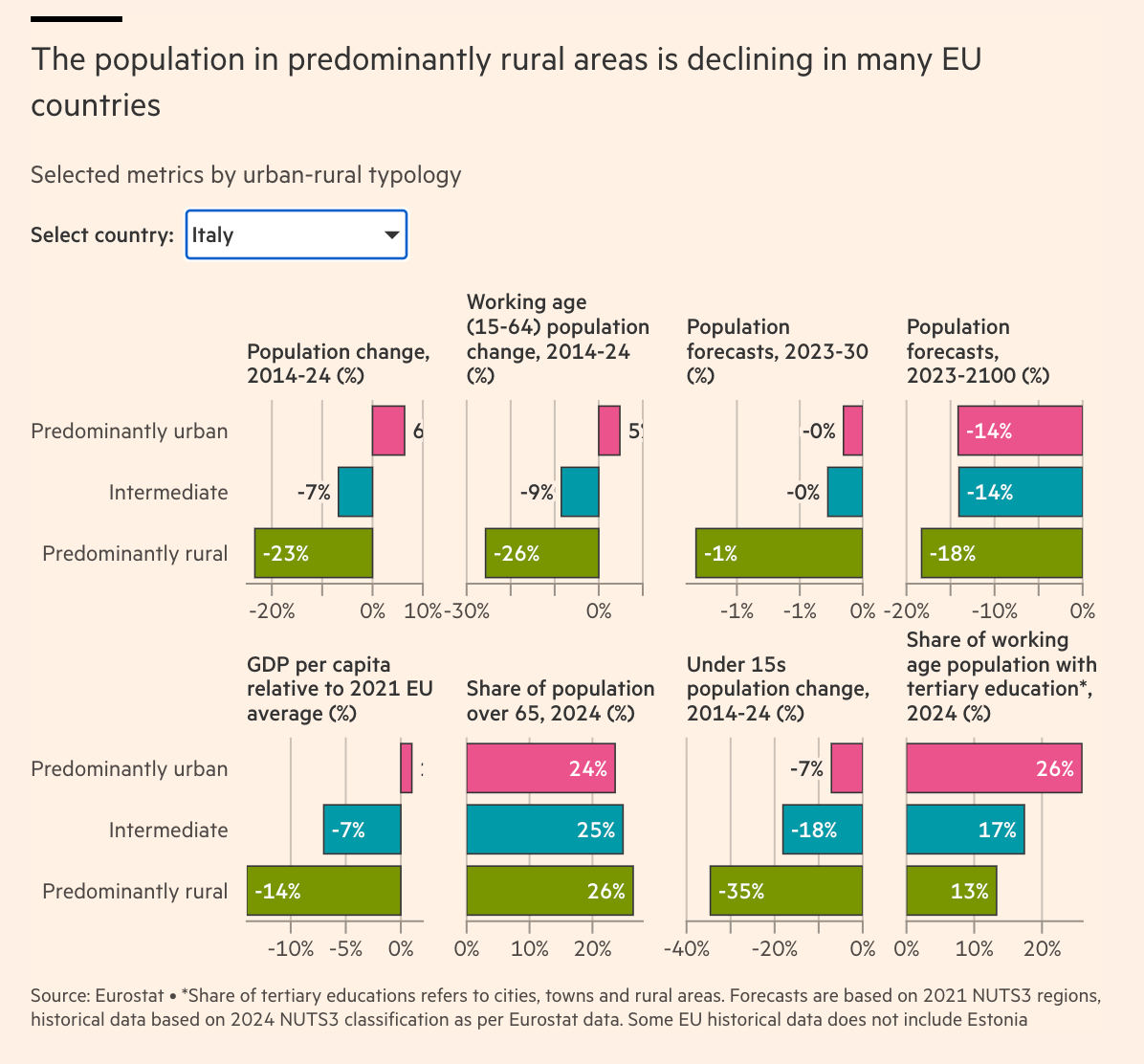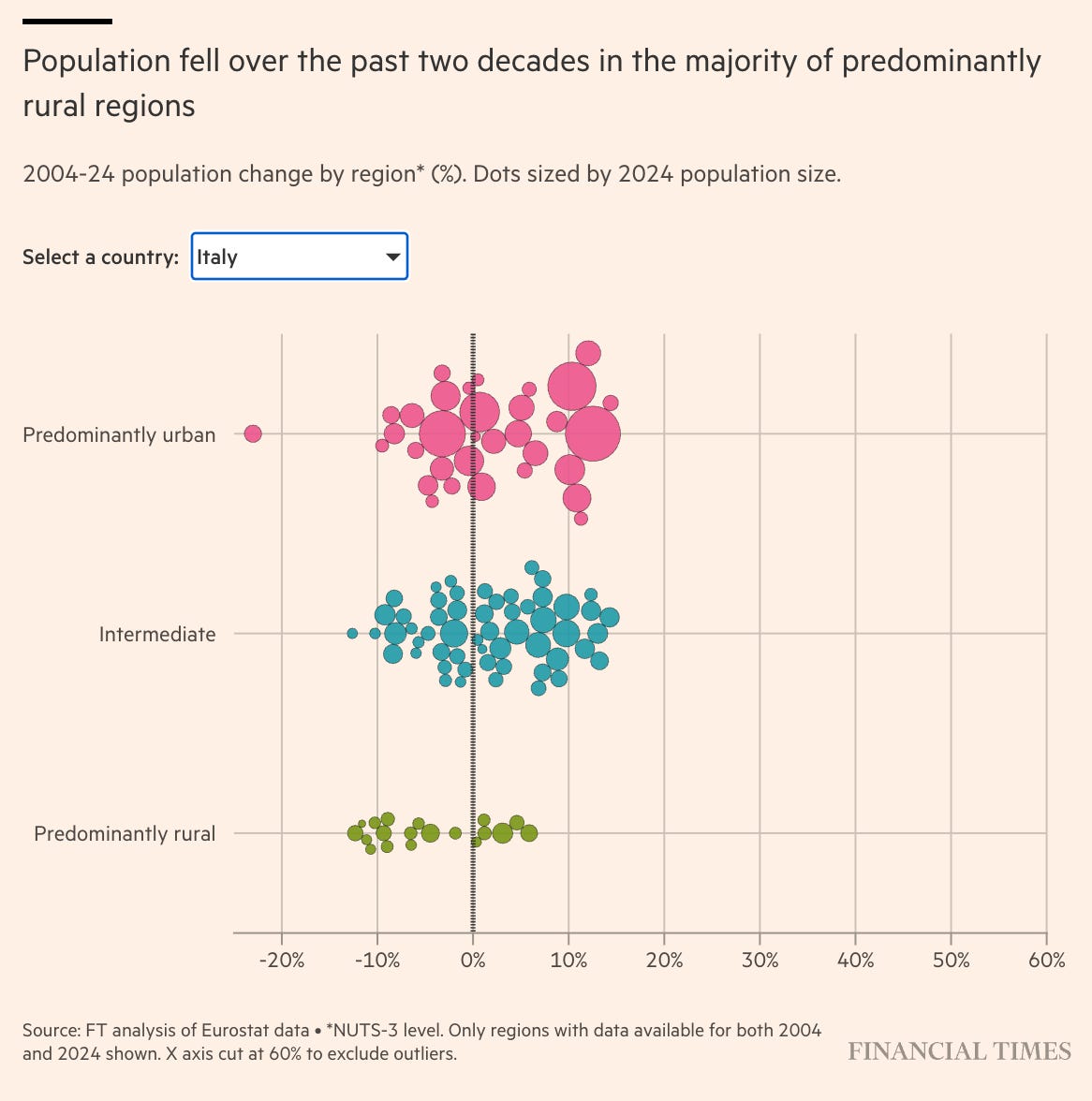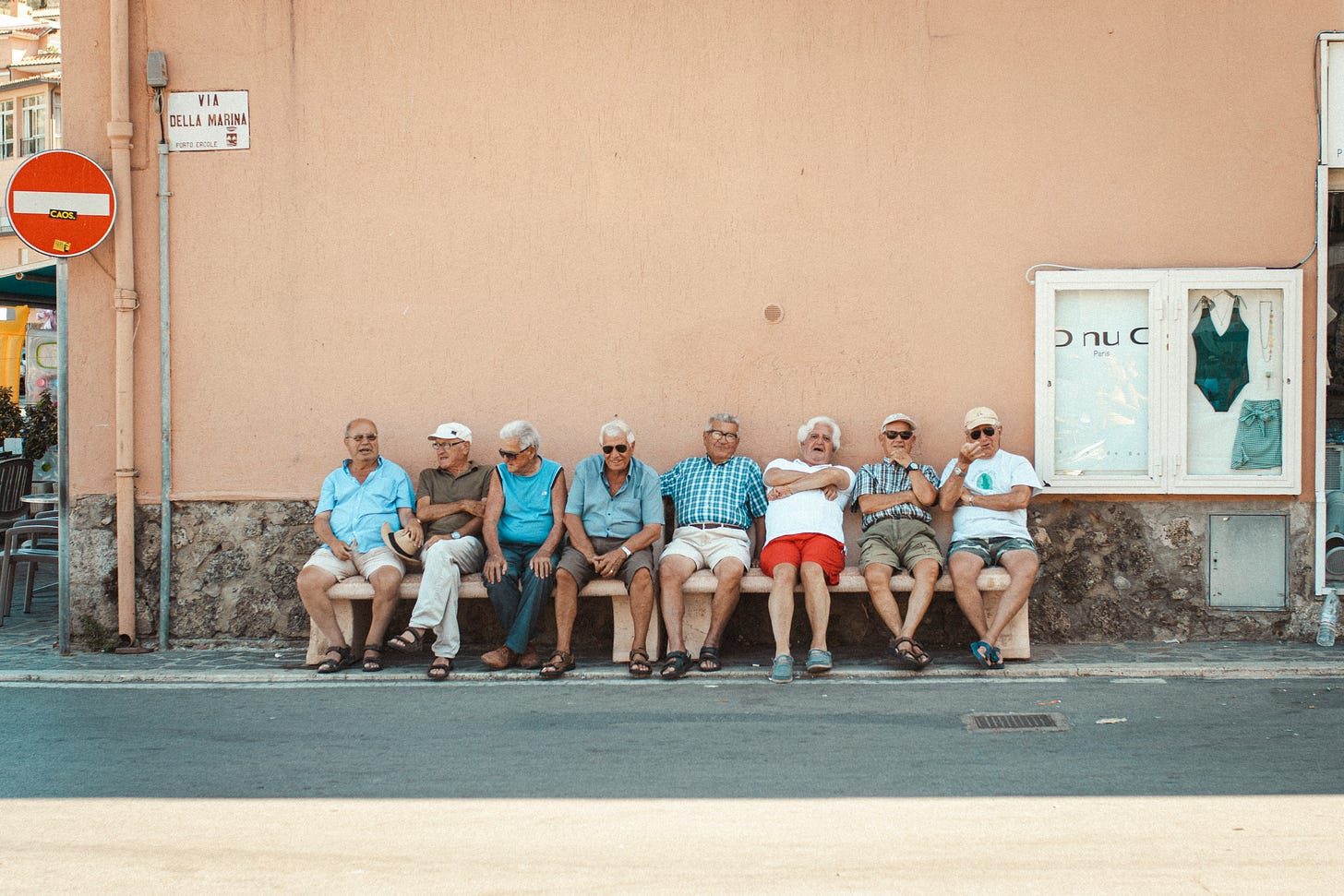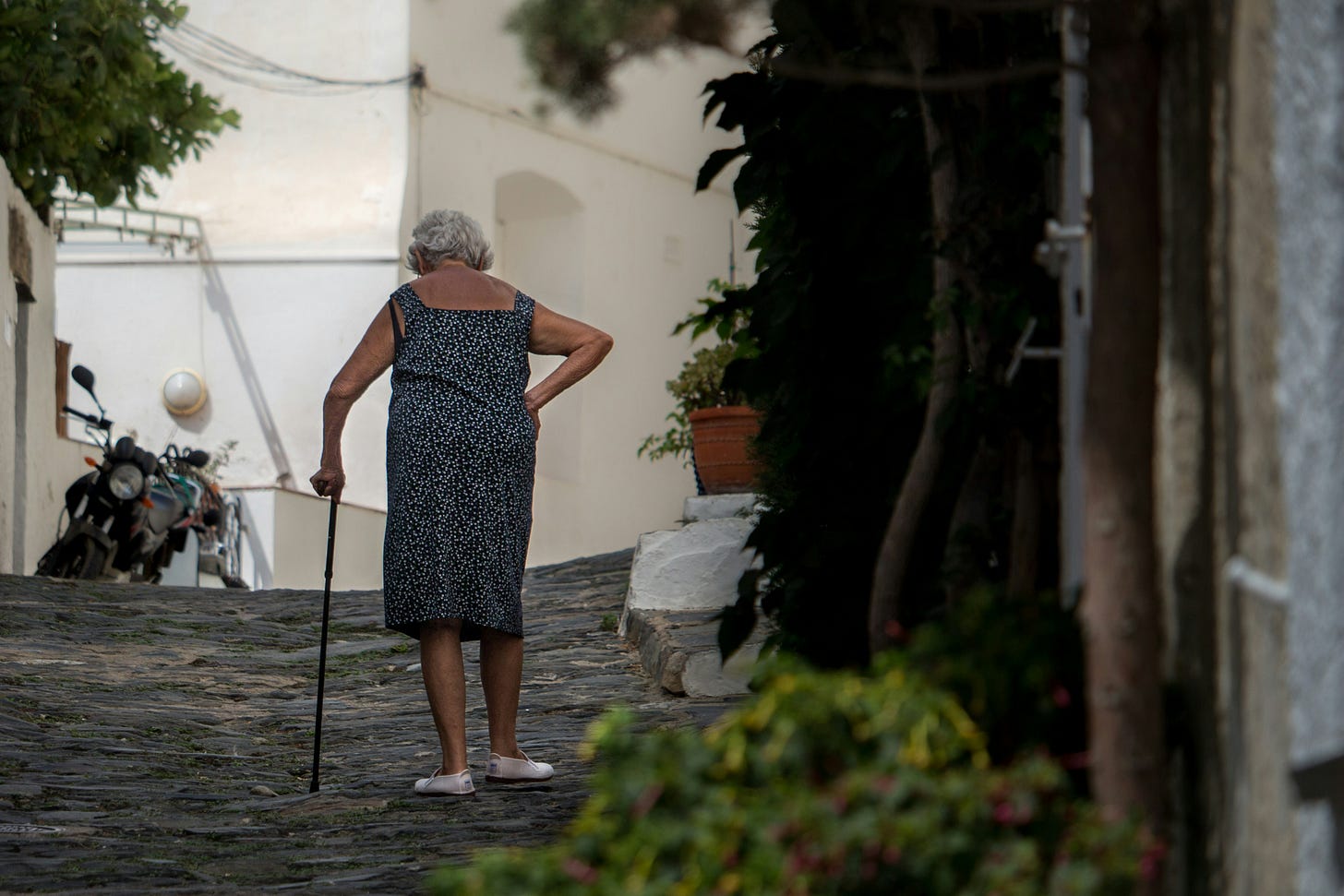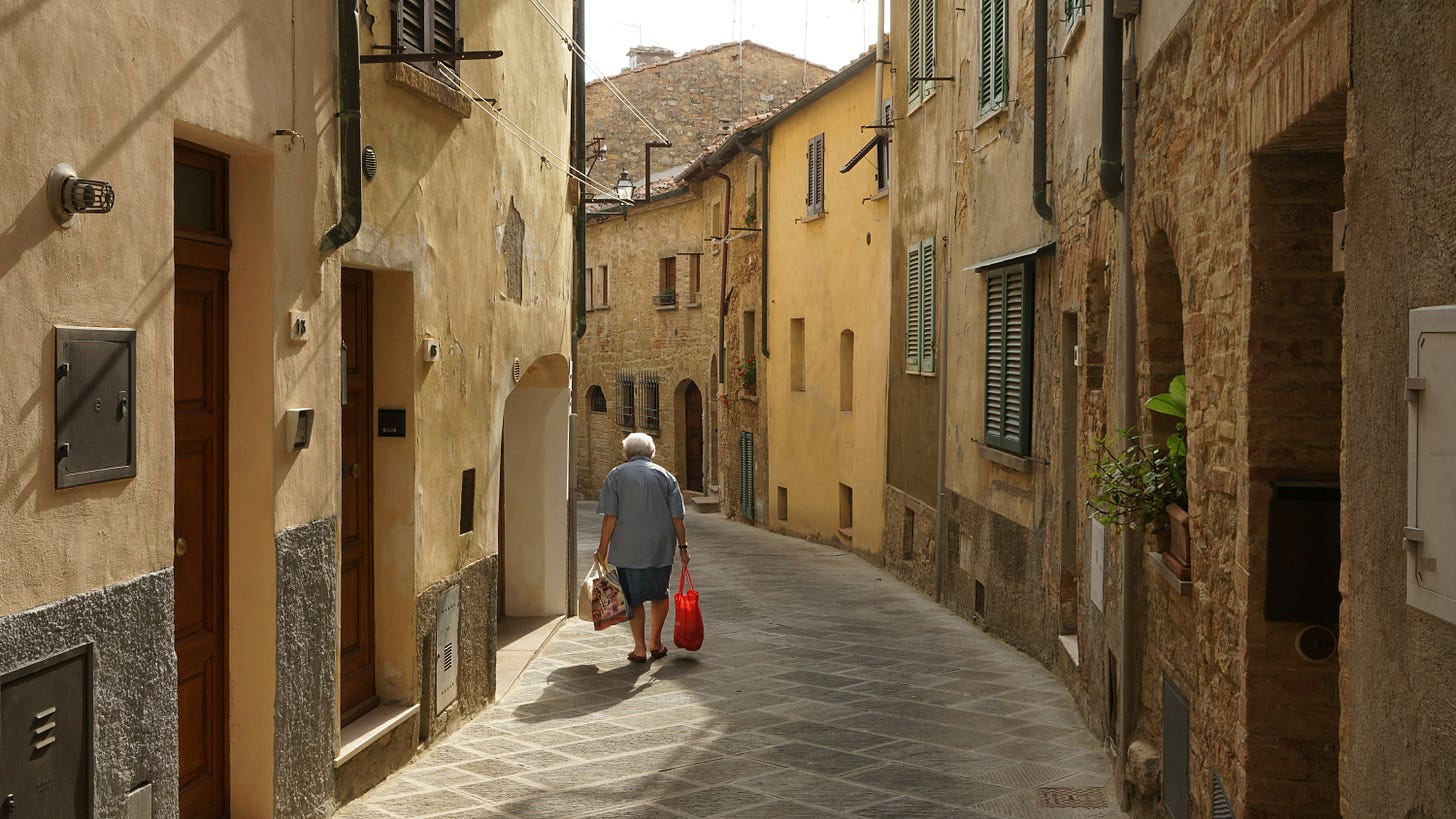The fight to save Europe’s small villages
If even the Financial Times is talking about it, maybe it’s time we change the narrative (and get to work)
La versione in italiano di questo articolo è disponibile sulla newsletter
There’s an article published recently in the Financial Times that anyone who cares about the future of real Europe should read carefully — not the postcard version, but the one found in abandoned homes, shuttered bars, and dusty “for sale” signs that no one calls about.
The title says it all: "The fight to revive Europe’s shrinking rural areas." It opens with the story of Molezuelas de la Carballeda, a tiny Spanish town of just 47 residents, now down to one bar, a weekly visit from a doctor, no school, and an average age of over 70.
For those who still think rural depopulation is just an Italian issue — time to think again.
A continent of disappearing towns
The FT’s report — by Valentina Romei and Barney Jopson — starts in deep Spain but widens the lens across Europe: from Lithuania to Finland, from Tuscany to the Balkans. What emerges is a clear and alarming picture: Europe’s rural areas are emptying at a record pace.
📉 According to Eurostat, between 2014 and 2024, nearly 8 million people left rural areas in the EU, while more than 10 million moved into cities. With an ageing population and plummeting birth rates, schools close, services shrink, and the cycle of decline feeds on itself.
📍 In Finland, there are municipalities with just nine births per year. In Bulgaria and parts of Portugal, projections show over a third of rural residents will disappear by 2100. In the Scottish Highlands, entire regions are facing a future without young people, banks, or transport.
📦 In response, governments across Europe are trying a mix of tax incentives, €1 houses, immigration programs and service consolidation plans. But these often clash with bureaucracy, local fatigue, and top-down strategies that ignore real needs.
The OECD suggests we need to “shrink smartly” — by consolidating, digitising, and reframing the narrative. But many mayors — like Satue Lobo in Spain or Hirvonen in Finland — admit they’re not sure the trend can actually be reversed.
What about Italy?
Italy is often held up as a textbook case of territorial divide. But — as usual — our provincial storytelling reduces everything to an Italian tragedy: brain drain, youth flight, the South emptying out... forgetting that we’re just one piece in a much bigger European puzzle.
I don’t pretend to be a policy expert. But after years working on the ground — getting my hands dirty with houses, permits, communities, artisans, mayors, investors, and local bureaucracy — I can say what’s working (and what isn’t), at least in our corner of the map: ITS ITALY.
ITS ITALY: a hands-on model for regeneration
ITS ITALY was born with a simple idea: bridge the gap between those looking for a different life and the towns that risk disappearing.
We don’t sell pretty postcards. We don’t peddle real estate dreams. We don’t offer a fairytale. Instead, in plain words: we connect people who want to live, work, invest and stay in Italy’s small towns — and we do it for real.
How?
🔧 We regenerate, not just renovate. Every property is part of a broader plan: rebuilding urban and social fabric. A roof isn’t enough — we ask who will live there, what they’ll do, and if they’ll stay.
📊 We build solid business models: no delusions of €1 bargains. Our financial plans cover everything — from costs to returns, cash flow to tax impacts. And we take responsibility for results.
🤝 We cultivate local networks: of mayors, technicians, businesses, and citizens. Projects work when trust is mutual. In Caprarica di Lecce, Mussomeli, Montedinove in Le Marche, and several towns across Sicily, Basilicata, and Umbria — we’ve seen it firsthand.
🌍 We connect globally: digital nomads, expats, returning Italians, micro-investors. ITS ITALY today is a platform, a network, a growing community. It speaks two languages, publishes newsletters, runs on-the-ground tours — and most importantly: it delivers real, tangible projects.
Why is it working?
Because:
We mix local vision with international mindset
We think in ecosystems, from real estate to hospitality
We tell a different story: not towns that are dying, but towns that are rebuilding
We build alliances — between newcomers and locals, public and private, roots and futures
You can see it in the numbers: over 140 properties revived, new families settled, micro-businesses born. But more importantly: you see it in the people. Those who left London for Lecce. Paris for Palermo. Berlin for Basilicata.
Small towns, big visions
The Financial Times reminds us: the fate of Europe’s small towns is not yet sealed. We can abandon them, or reinvent them. Mourn them, or live in them.
Italy has all it takes to become a laboratory for this new renaissance: beauty, biodiversity, heritage, quality of life, attractive taxation. But we need serious plans, competent people, digital tools, international outreach — and above all, a shift in mindset.
Let’s stop just counting what’s been lost. Let’s start showing what’s still possible.
We’re already doing it. One project at a time. One house at a time. One story at a time.
Because Europe’s future isn’t only in the cities. It might just begin again — in its small towns.


